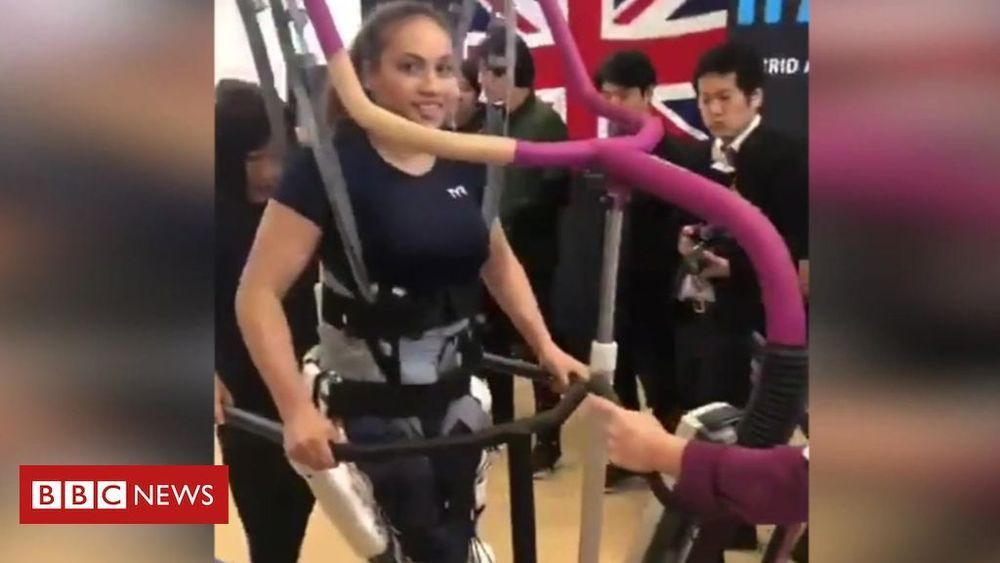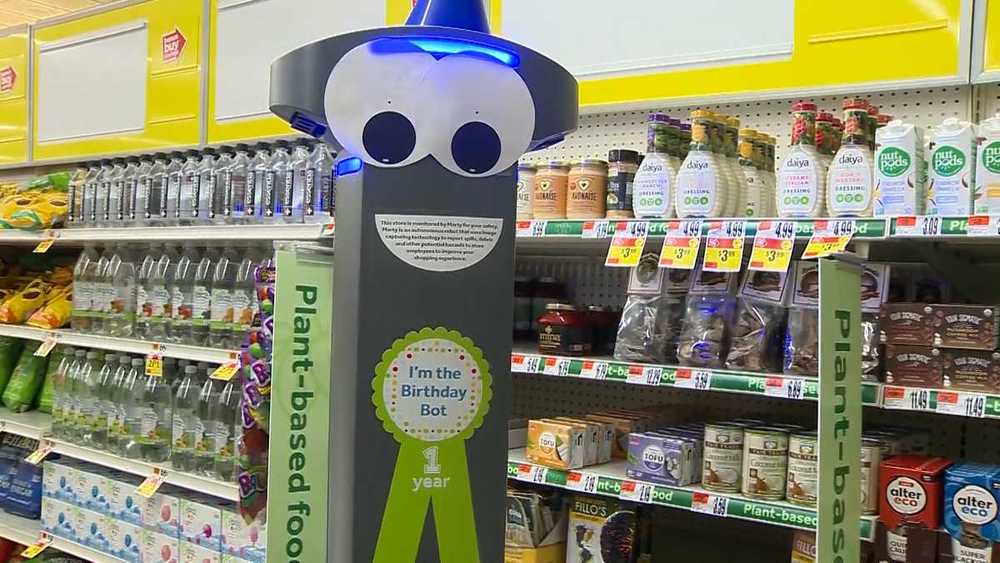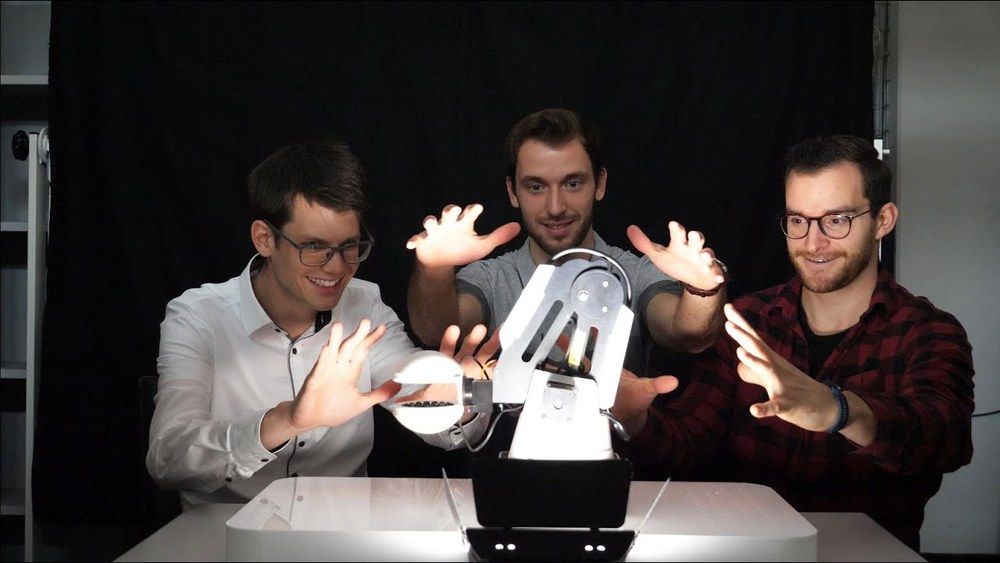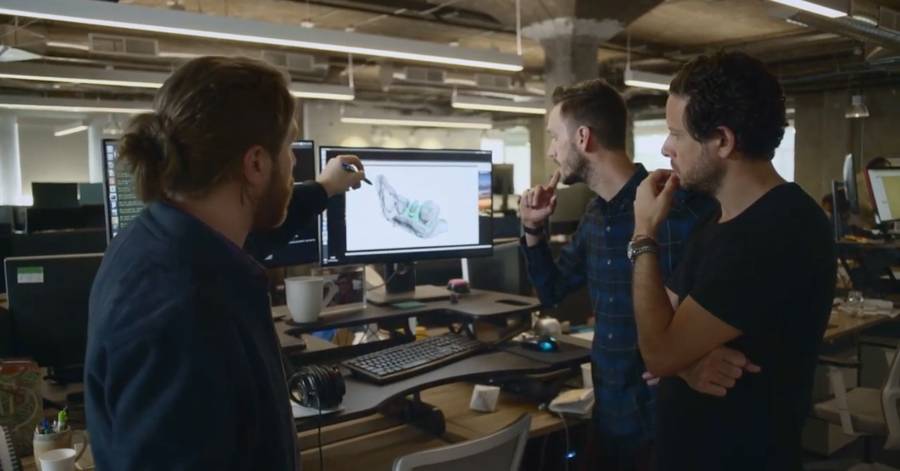By robotic suit walk Grace Harvey reveals the mixed emotions she had after walking for the first time in a robotic suit.




Proving once again that truth is often stranger than fiction, a Swiss researcher has recently developed an astonishing new type of robotic hand that can actually lift small items via invisible sound waves. While it might appear to be a clever conjuror’s trick, it’s really employing an old invention called ultrasonic levitation, whereby objects are captured and levitated using the sorcery of science.
Researcher Marcel Schuck of the Swiss Federal Institute of Technology in Zurich is utilizing a strange phenomenon whose history dates back 80 years, but fusing the technology into modern robotics applications. Schuck’s initial touchless gripper resembles a halved gourd attached to a network of wires and containing dozens of miniature loudspeakers.

As the U.S. military and defense contractors eye a potential drone war with Iran as tensions with the country remain elevated, the defense industry is also preparing to test-fly domestic versions of its combat drones over major American cities in an effort to fully integrate military-grade drones into civil airspace alongside commercial air traffic in the coming years.
That’s right, those robotic killing machines used for counterterrorism strikes in the Middle East are coming home — and could eventually be used to surveil large protests and communities of color throughout the U.S.
The Poway-based defense contractor General Atomics Aeronautical Systems, Inc., will test-fly its SkyGuardian drone, outfitted with a 79-foot wingspan and advanced surveillance capabilities of more than 2,000 feet, over San Diego, California, sometime this year.



In our current information society and digital media culture, the stories, images, voices and traces we leave behind, construct the narrative of who we are. Our identity has become synonymous with our online data. Digital media empowers us. However, its inescapable presence within our lives reveals potential for consequences beyond mortality. Our digital death is effusively about data. What if all your data was used to create a digital afterlife presence capable of generating communication in your style of speaking and thinking? For those of us actively participating within the digital realm this could soon be a reality flowing into mainstream society. The digital footprint we now obtain comes with concerns of privacy, power, remembering & forgetting. Constructing these affordances within a curation towards death, causes for more daunting concerns about our western societies and our roles within it. One must ask themselves, how do we construct our ways of remembering in this digital age, knowing our immortality could be reconstructed to live on forever?
Season 2, episode 1 of Black Mirror, ‘Be Right Back’ hauntingly confronts us with our worries about how to deal with the death of loved ones. The episode demonstrates a frontal onslaught on humanities fragility when it comes to dealing with death & the concepts of how we decide to remember. The episode showcases technology, able of creating artificial intelligence that sounds, talks and thinks like you would. Black Mirror, the dystopian Netflix series, offers up a future that is eerily close to ours. Its success comes mainly from showing us a sci-fi angle that borders reality. But much like the title suggests, the black mirrors we face each day, the screens and technology that rule our lives, cast back a reflection of us and our society that is not just ‘close’ but already here.

Artificial-intelligence startup Pearl Inc. is using machine learning to analyze dental imagery, helping insurers pinpoint whether the same X-ray was used for more than one patient and whether a procedure was necessary.
The West Hollywood, Calif., company said its system has found thousands of cases in which dentists have used the same X-rays or other images to bill insurers for multiple patients.

The algorithm lets robots find the shortest route in unfamiliar environments, opening the door to robots that can work inside homes and offices.
The news: A team at Facebook AI has created a reinforcement learning algorithm that lets a robot find its way in an unfamiliar environment without using a map. Using just a depth-sensing camera, GPS, and compass data, the algorithm gets a robot to its goal 99.9% of the time along a route that is very close to the shortest possible path, which means no wrong turns, no backtracking, and no exploration. This is a big improvement over previous best efforts.
Why it matters: Mapless route-finding is essential for next-gen robots like autonomous delivery drones or robots that work inside homes and offices. Some of the best robots available today, such as Spot and Atlas made by Boston Dynamics and Digit made by Agility Robotics, are packed with sensors that make them pretty good at keeping their balance and avoiding obstacles. But if you dropped them off at an unfamiliar street corner and left them to find their way home, they’d be screwed. While Facebook’s algorithm does not yet handle outside environments, it is a promising step in that direction and could probably be adapted to urban spaces.
